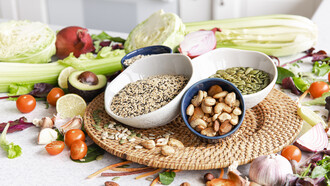The lentils come in multiple colours, textures, shapes, sizes, and tastes, and are an indispensable ingredient in every Indian kitchen. India is celebrated as a country of multiple cultures. Every state boasts of indigenous culture to them, and under its umbrella, every community and sub-community also observes and honours a set of practices and lifestyles, unique to them.
For instance, the state of Kerala, which goes by the tagline ‘God’s own country,’ is home to one of the most diverse cultural groups from different religious backgrounds. The entire state is tied together by the festival of Onam, a celebration that despite being a Hindu festival, is commemorated by other communities as well. The state is also popular for its distinctive art form that is associated with each community. Certain dance forms like Thiruvatirakali for Hindu, Oppana for Islam, and Margam Kali for Christianity are unique to the women of these communities in Kerala.
Although you can find communities of Hindu, Islam, and Christianity spread across the country, the above art forms can only be found in Kerala.
Similar is the story of dal. Although it is a staple in every Indian kitchen, the dishes that originate from all these kitchens can be vivid variants.
When did India’s obsession with the simple yet nutritious blend of dal begin?
While it can be a challenge drawing out the exact date or period, there is proof that takes us back to the civilizations of Harappa, where lentil starch was found in some storage containers. The mention of the dal is also prominent in the Indo-Aryan language, Sanskrit. Whether a form of food that has existed since 3300 BCE or was introduced by the Aryans, dal has maintained its amicable reputation for a remarkable amount of time, but not without undergoing transitions.
Today, dal is one of the easily available products and India is one of the largest producers of pulses and lentils, globally. Also, one of the foremost consumers.
Lentils are a great source of protein, high in fibre, and complex carbohydrates, while also being low in fat and calories. Lentils are the most sought-after ingredient for their gluten-free quality and vegan versatility. And India is undoubtedly the culinary champion of myriad dishes made out of lentils, especially with its innumerable varieties of lentil soup.
Dal is indisputably the comfort food for millions in India, only in different forms, starting from the delicious sambhar and rasam from the Southernmost states of Kerala and Tamil Nadu, the tangy, spicy, and rich tomato pappu or pappu charu of the twin Telugu states, Andhra Pradesh and Telangana.
There is also a history that traces the sambhar that has the entire population of the south in this delicious grasp, to the Maharashtrian amti dal. While the dal is served as a gravy or as an accompaniment to rice or rotis in most places, the Moradabadi dal is served as a snack! Made with de-husked green gram lentils, slow-cooked to perfection, and topped with tangy and spicy garnishes, dal is a street food in Moradabad. To this day, the Moradabadi dal is unmatched when it comes to the exemplary combination of simplicity and flavour.
The king of all lentil curries and soups, dal makhani, oozes with the soft richness of butter and the aroma of black gram cooked to a velvety perfection with the impeccable blend of mild spices.
The west is owned by the legendary panchamel dal, sometimes also referred to as panchamela or pacharatna dal a mix of five different types of lentils, packed with punch and nutrition, first introduced to the meat-favouring Mughal kitchens by a princess who preferred vegetarian food. Not only preferred by vegetarians or vegans, but lentil has also made their way into meat-based dishes, giving rise to curries such as dal ghost.
Walk into any restaurant in India and ask for dal, and the menu handed to you will have a long list of options ranging from dal tadka, maa ki dal, dal makhani, dalma, palak dal, cholar dal, dal dhokli and on and on the list goes.
From North to South and East to West, dal has the whole population of India wrapped around its husks. For, it is a task quite impossible to say no to the yellow soup simmering in the kitchen that envelops the entire house in its mild, flavorful fragrance.















